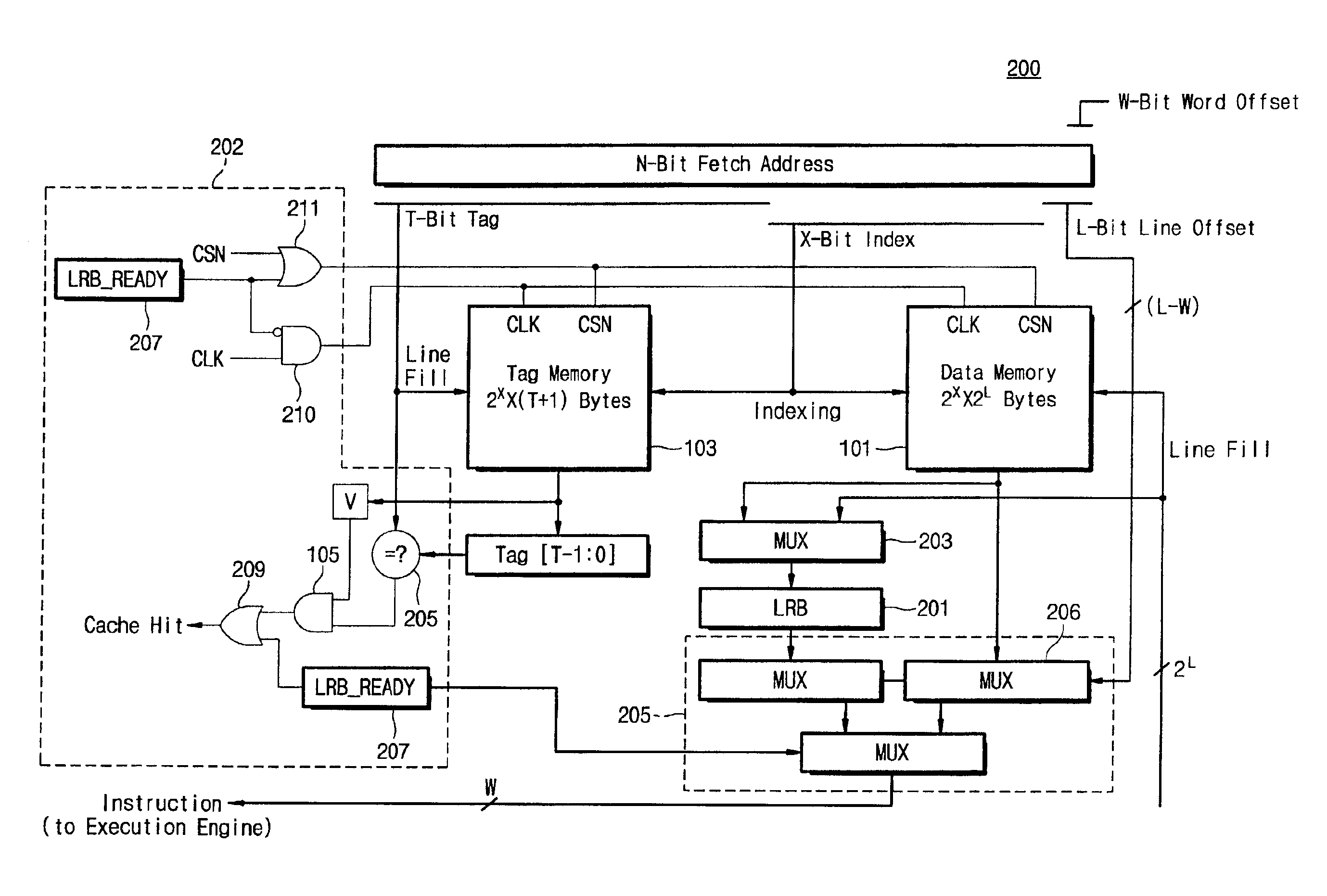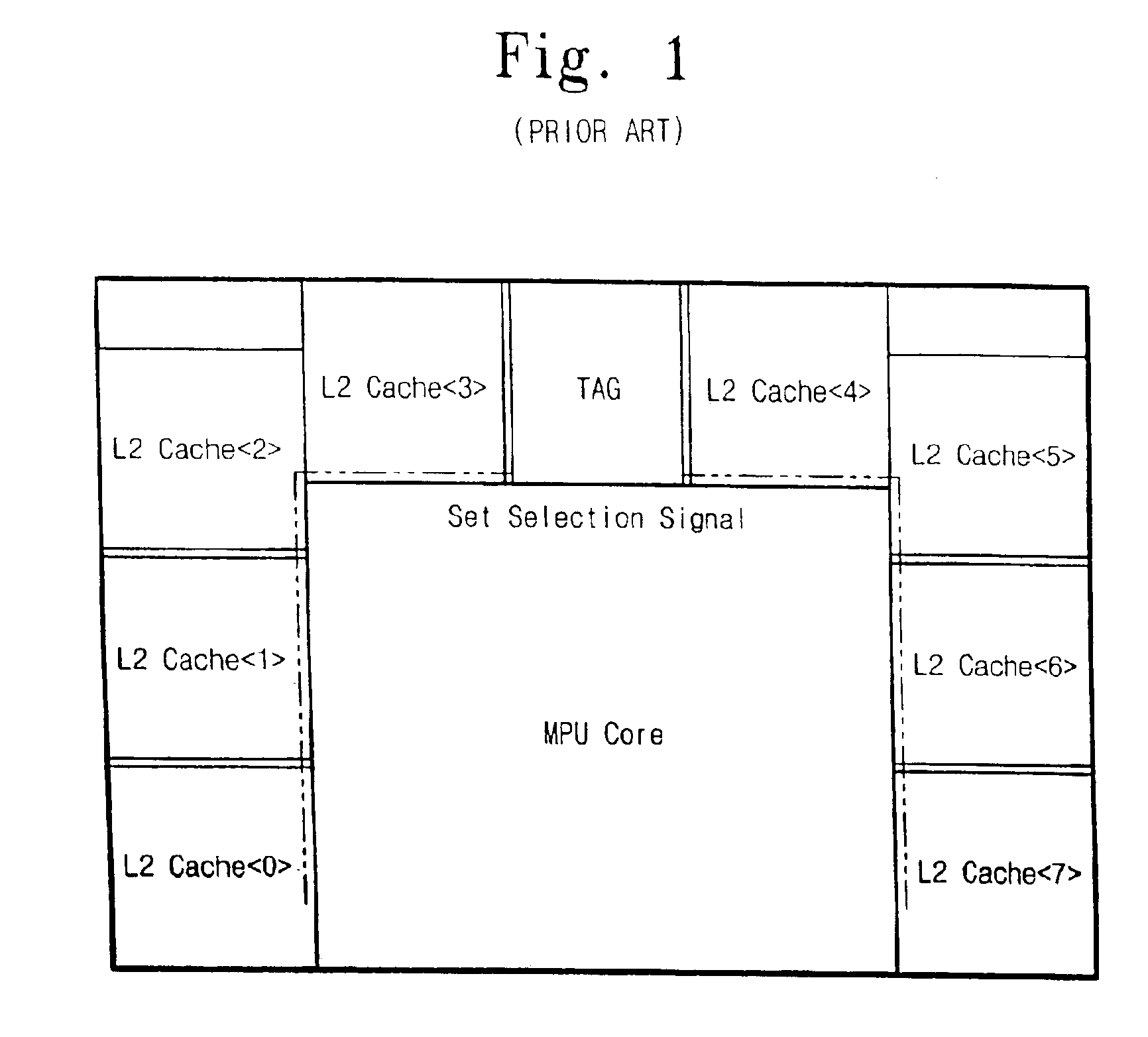Microprocessor having a low-power cache memory
a microprocessor and cache memory technology, applied in the direction of memory adressing/allocation/relocation, instruments, sustainable buildings, etc., can solve the problems of significant power dissipation due to memory access, cache memory often consumes a significant portion of the power dissipated by the processor, etc., to achieve the effect of not increasing the circuit complexity of the cach
- Summary
- Abstract
- Description
- Claims
- Application Information
AI Technical Summary
Benefits of technology
Problems solved by technology
Method used
Image
Examples
Embodiment Construction
[0022]The preferred embodiments of the invention will be more fully described with reference to the attached drawings. The present invention will be described with reference to an instruction cache, but it will be appreciated that the invention can be applied to other types of cache memories such as data caches.
[0023]FIG. 2 is a block diagram that shows a conventional cache structure. Referring to FIG. 2, the conventional instruction cache includes a data memory 101 for storing contents in a main memory, a tag memory 103 for storing a tag address indicating the instructions that are presently stored in a cache, a cache controller (not shown) for controlling an overall operation of the cache, and a data path for interconnecting the constituents under the control of the cache controller for mutual data transmission. Although an execution engine and a main memory are not illustrated in FIG. 2, mutual connection relationship between the execution engine, the main memory, and the instruc...
PUM
 Login to View More
Login to View More Abstract
Description
Claims
Application Information
 Login to View More
Login to View More - R&D
- Intellectual Property
- Life Sciences
- Materials
- Tech Scout
- Unparalleled Data Quality
- Higher Quality Content
- 60% Fewer Hallucinations
Browse by: Latest US Patents, China's latest patents, Technical Efficacy Thesaurus, Application Domain, Technology Topic, Popular Technical Reports.
© 2025 PatSnap. All rights reserved.Legal|Privacy policy|Modern Slavery Act Transparency Statement|Sitemap|About US| Contact US: help@patsnap.com



